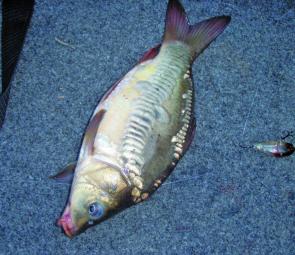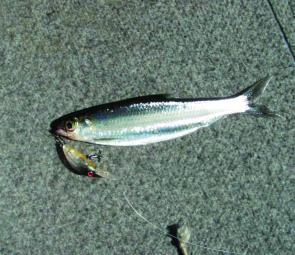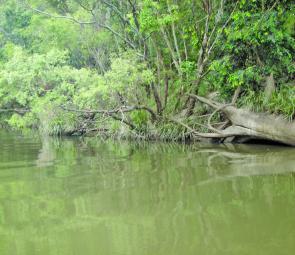Early this month fishos will have it all to themselves in the estuaries, along the beaches and offshore – but, of course, the final week will be hectic and crammed with visitors.
If you’re one to avoid the crowds and savour some excellent opportunities on a range of species, schedule your fishing time during the first few weeks of December and you shouldn’t be disappointed.
If you someone who sees waters crowded with holidaymakers as a challenge, or a necessary evil, there’s still hope of some good action if you play it smart.
The rivers and the adjoining ocean seem to be taking forever to warm up this year but, even if the trend of the past few years for temperate Decembers continues, there should be warm water and active fish this month.
Whiting always come to a peak this month and seldom disappoint, whether you chase them in the shore break or beach gutters and potholes, or over the shallows or deeper runs in the rivers.
On the beaches you’ll do best on a rising tide, especially the top half, when the fish hoover over the tidal flats for small worms, crabs and molluscs.
Although you’ll catch them in the midday sun, you’ll encounter more and a better class of fish early morning and in the evening.
Live beach worms are almost essential to catch reasonable numbers of whiting from the surf; they seem to exude so many juicy aromas that beckon hungry whiting from a distance.
However, there are fair alternatives, including live yabbies pumped from any nearby estuary. These work best at dusk, dawn and in the dark, when those bait-stealing pickers – tiny bream, whiting and dart – aren’t so prevalent.
You might even get a very pleasant surprise from a jewfish of any size, a decent flathead or a nice bream, all of which won’t hesitate to inhale a yabby at any time.
The new Dynabait dried tube worms, which are sustainably raised in aquaculture ponds, are also worth a shot. Simply soak them in seawater for 20 minutes and they’re quite lifelike.
They make a great standby and have a long shelf life in dried form.
These dried tube worms also should work in the estuary.
I know of no other whiting so consistently keyed in on bloodworms than those in the Richmond; every other bait is a distant second and you might as well throw poppers.
Come to think of it, there’s no better month for that, either. The Richmond prawns should be in reasonable numbers, now the water has finally warmed, and the whiting will be loading up on these, especially around the new moon.
They’ll have to compete with the bream, which are also fond of poppers. It’s amazing to see either fish materialise under your lure in less than 30cm of clear water where a nanosecond ago there couldn’t possibly have been a fish.
Then again, both fish have a penchant for becoming invisible, with their shadow, or the bream’s black-edged tail fin, often being the only indicator that there is, indeed, a fish where you’re looking.
One fish that’s a dead giveaway anywhere near your floating lure is the mangrove jack. That flash of red just as all hell breaks loose is strongly on the cards this month.
A steamy pre-dawn or a glassy twilight is the best time to encounter these fanged red flashes.
Your best chance is when a pulse of 23°-plus water pushes in from the ocean, quite often early this month; I’m not sure whether it brings the jacks with it or it activates the residents, but the jack switch certainly clicks on.
The warm oceanic water this month will also bring in all sorts of tropical goodies, with the baby black marlin high on everyone’s wish list.
With the Summer cool upwelling likely to take effect at any time from Lennox Head to south of Evans Head, it’s a matter of checking on the temperature and the current and picking your day.
The first day or so after a southerly change has blown through usually provide the best water in close, although if your boat is capable of safely travelling out wide it’s just a matter of looking for the bait and the current break.
In close, that warm water may hold the odd school of spotted mackerel as well, especially down towards Woody Head or over the reefs off New Brighton, north of Brunswick Heads – maybe.
After some of the dud mackerel season locally over the past 10 years, I’ll just hold off on any sort of mackerel until I actually catch some!
Bottom fishing usually improves a little in close this month, with a slight influx of squire and teraglin as the bait schools begin to work closer.
Those Christmas chopper tailor are often a welcome sight as they slash into the bait schools early and late in the day, too.
So if you fish to the conditions, be on and off the water early in the mornings and work the evenings, you should still be able to enjoy some good fishing despite the growing crowds on the coast.
And if it all gets too much, you can head inland to the freshwater reaches, which are still fishing extremely well.
We’ll continue to enjoy some rather excellent freshwater fishing until the heavens open again some time next month or the one after.
The headwaters of the Richmond are less and an hour’s drive from anywhere on the coast and it doesn’t take much longer to hit the upper Clarence as well, so there’s somewhere in the region for everyone to wet a line over the festive season.
Reads: 2333
This little Atomic Hardz has proven a hit with all manner of estuary fish, including this mirror carp.

The author’s not sure if the herring want to eat this little Hardz or mate with it. The lure also catches bream and plenty of bass.

Wherever you fish this month, there’s no shortage of places to cast and if you get there close to first or last light, you should meet with success.

A good pair of locking artery forceps is the perfect tool for removing hooks.




